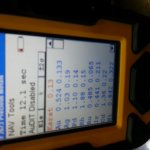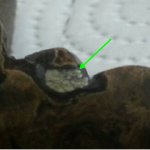- To participate in the 911Metallurgist Forums, be sure to JOIN & LOGIN
- Use Add New Topic to ask a New Question/Discussion about Assaying, Microscopy, Mineralogy & XRF/XRD.
- OR Select a Topic that Interests you.
- Use Add Reply = to Reply/Participate in a Topic/Discussion (most frequent).
Using Add Reply allows you to Attach Images or PDF files and provide a more complete input. - Use Add Comment = to comment on someone else’s Reply in an already active Topic/Discussion.
Huge difference between XRF and Fire Assay Results (9 replies and 1 comment)
I have been using a hand held XRF gun for some time and have found that for me certain elements work much better that others. With my gun the noble metals do not work well unless in very high concentrations, silver seems to be the most sensitive. I have had wonderful results on things like zinc, lead, copper. If you grind the sample to a couple of hundred mesh and put it in a plastic sandwich zip lock bag and read two or three times and average you can do very well on the heavy metals and silver.
I will try grinding up the sample and using the xrf on it again. We thought the xrf results would have been fairly accurate given the concentration of noble metals was indeed very high (according to the xrf). Au came in at 6% - 8%.
Could such high Ti/Fe/Ni/Zn (50%, 30%, 8%, and 4% respectively) levels have affected the fire assay result at all?
Hi, this will give you very accurate calculations. You first need to calibrate the xrf for every element your interested in.
Say Cu is of interest:
Get yourself 4-5 standards from reputable lab covering the range for arguments sake 1, 4,10,25,43% copper standards. In your case you can use the fire assay results if sufficient. Plot a stright line equation between the results of fire assay vs xrf. Use that linear equation as a reference. Meaning whatever realtime reading you take on the deposit that value you substitute with x value and add intercept to get true value of reading.
You should get very close to real value. Hope make sense
XRF works on the fluorescence spectra of the different elements. If you look them up, the spectra of each element is very complex, and there are 92 elements. In some cases a good standard may work, but it has to have very similar concentrations of all of the elements in the sample you want to analyse. I am not sure about your particular machine, but any quantitative XRF device should be putting the spectra through a very complex program that chooses a possible peak(s) to measure, with as little as possible interference from all the other elements present, and then corrects it for any interfering peaks from those other elements. So it looks at all the element spectra down to at least 100ppm level, and calculates their abundances, and applies the correction to all the elements. With the new values, it does it again, for a refinement, and hopefully after a few reiterations, the results coverge on the best value. I was using an early version of this type of program in 1970 - 72, in Fortran, that had to be run overnight on a mainframe computer. I had assumed that by now, the portable XRF gun had enough computing power to look at all the spectra, and work out a good refined value for all elements. However I would think they would have great difficulty below 10ppm, depending on the interfering elements, and the location of the peaks that are measureable on the element of interest. I would say that in your case, either it does not use this correction algorithm based on all the the +100ppm elements in your sample, or if it does, it is not smart enough to look around for a suitable peak to measure, that is not highly affected by peaks from other elements present in your sample. I would say you need to have an in-depth technical discussion with the manurfacturer. You will also have to have an idea of the main elements in your samples. There is also scope for difficult situations of using a different wave length of xrays used to excite. I do not know if this is possbile with new hand held devices, but it should be possible by now. In the old days, we changed the tube, which was the size of a tall 3 litre flask! The newest guns should be able to change filters or even anode targets.
Thank you guys for your input. We used two different Thermo Niton XL2 handheld units to test this ore. These are the same units that we use to test our dore prior to sale, so we know that they are well calibrated for Au.
We were very surprised that the fire assay came back so low as compared to what the xrf was giving us.
All respondents have provided educated solutions...for XRF, the attenuation-enhancement correction procedure used to correct matrix effects caused by concomitant elements and calibration procedures hugely affect it's accuracy...especially for geochemical samples; Fireassay is used unequivocally for ore samples. Suggest you ship splits of your samples to accredited geochemical assay labs for comparative analyses...LeDoux, Alex Stewart, Inspectorate, Alfred Knight, Intertek to name a few...on the fireassay front, request the lab to use 2 or 3-assay tons to alleviate potential "nuggetting" effects.
I use a hand-held XRF daily to monitor base metal grades in solution, in ore and in metal plate. The instrument is extremely useful, but it is very important to understand the limitations of the XRF. Previous respondents have already provided relevant comments and I wish to add to those.
The XRF uses a number of algorithms to extract the spectra of each element from the confusing set of peaks that the XRF reads. If the machine knew what to expect from your sample then it could remove the spectra of known major elements first and it would make the reading more reliable. Niton has thus provided a number of algorithms (“modes”) for popular ranges of grades and then calibrated the XRF for these average sample types. These modes are typically called “soil”, “mining”, “general metals” or “precious metals”. As your sample deviates from the samples that Niton used to write the algorithm, so the response of your mode will also deviate. The same element (for example iron) will have a different grade using different modes. Ideally each location would have it’s own algorithm, but that would require unrealistic programming expenses.
As previously suggested, you can calibrate your XRF for the elements you require. Be aware though that the hand-held XRF may give different results for different samples of the same grade. For example, at one of our projects (with correlation of thousands of samples) we found that the XRF analysed the copper oxide perfectly, but as soon as the proportion of sulphides increased, and the coarseness of the minerals increased, the copper analyses by the XRF were under-reading by as much as 75%. To calibrate your XRF, I recommend you use your own set of samples which were analysed by a reputable lab using ICP and/or Fire-assay (not external standards). If you calibrate your instrument, do not make the range of grades too large – stick to the range of grades you expect. Also please be aware that once you have calibrated your instrument the accuracy of your instrument will decrease as your tenor deviates from the calibrated range.
A cordial greeting, as in the other comments has the basis of how the XFR pistol works but we must take into account that these pistols make a "superficial" analysis of the sample as they say the manuals of the same and to have a best result should be shredded sample (better if sprayed) until homogeneous. This XFR analysis with gun is suitable for elements whose percentage is high and as seen can be calibrated as needed. Generally and depending on the type of deposit gold has low concentrations in ppm. On the other hand, the test on fire is a method that requires 30 g (according to the manual or method to be used) of a representative sample and mixed with fluxes (litharge, borax, sodium carbonate, silica, coal etc.). ..) melting at 1000 ° C to obtain two phases a metallic one (the Litargirio is reduced to metallic lead which causes to be collected in this metal the precious metals of gold and silver) and the slag phase that collects all the impurities, later to this metal lead that is called regulo is submitted to the process of copelation where it is oxidized obtained to the elements in this case gold and silver usually this method uses the weighing to determine the law or tenor of our material There are two techniques that complement the one (XFR with pistol) is for a preliminary survey and for elements that are in the order of% and the fire test is for obtaining value in ppm. There are pistol that is used in jewelry for the determination of the purity of the gold but these are of different configuration that a pistol that is used in mining exploration.



We recently found an anomaly in a mine that we have been exploring so we took a number of samples and checked them with two different handheld xrf guns.
As you can see in the photos, the rock sample reads very high in Ti, Fe, Ni, Zn, Pt, and Au. These results were repeated on a number of occasions with a variety of samples and all xrf readings landed within the same general range as in the photos. On some occasions we had up to 5% Ir as well.
We sent the same rock samples for fire assay and they came back at less than 2 g/t Au and 0 g/t PGM.
Why is there such a large difference in the between the two analytical methods?
It is not shown in the photo, but Ti was testing between 40% - 55%.
Any insights would be highly appreciated.